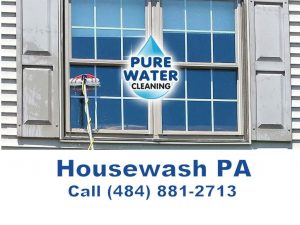Stucco Mold Removal with Low Pressure Cleaning
Stucco Mold Removal with Low Pressure Cleaning
 Stucco is a popular choice for home exteriors because of its durability, cost-effectiveness and aesthetics. The textured plaster surface provides visual interest and a sophisticated look. However, the porous nature of stucco makes it susceptible to the growth of mold, mildew, fungus and algae over time. Learning how to safely remove stucco mold while avoiding damage is key to preserving the look of your home.
Stucco is a popular choice for home exteriors because of its durability, cost-effectiveness and aesthetics. The textured plaster surface provides visual interest and a sophisticated look. However, the porous nature of stucco makes it susceptible to the growth of mold, mildew, fungus and algae over time. Learning how to safely remove stucco mold while avoiding damage is key to preserving the look of your home.
Inspect the stucco surface for cracks and other damage
Before pressure washing, carefully inspect the stucco surface for cracks, crevices or other openings. Water can seep into these areas during cleaning, which can lead to interior water damage and further mold problems.
- Use a blowtorch to thoroughly inspect all corners, edges and protruding areas, such as window sills, for damage.
- Run your hand over the entire surface looking for cracks.
- Make minor repairs with an exterior sealer of the same color as the stucco and allow it to cure for one week.
- In case of major damage, consult a plasterer before washing.
By sealing the damage first, you will prevent water from seeping behind the stucco during the pressure washing process. Unrepaired cracks will worsen over time due to exposure to water.
Get the equipment you need for low pressure cleaning
- Pressure washer: electric or gas model with a pressure of 1,500 PSI or lower to avoid stucco damage.
- Low pressurespray nozzle: 25 or 40 degree nozzle.
- Hoses and extension cords: Use the thickness/length needed to reach all areas.
- Soft bristle brushes: For hand scrubbing heavily soiled areas.
- Cleaning solutions: Exterior cleaners, bleach, borax mixtures that kill mold and mildew.
- Protective equipment: Gloves, goggles, mask when using chemicals.
Choose cleaning solutions specifically formulated for exterior surfaces and carefully follow all dilution, application and label safety instructions.
Effective Stucco Cleaning Solutions for Exterior Surfaces
Detergent and water: Good for light soiling.
Bleach andwater (1:1): Removes mildew and algae.
Bleach andconcentrated exterior cleaner: Increases cleaning power. Borax, hot water and detergent: Alternative to bleach for mildew and algae.
Always test cleaning products on inconspicuous areas. Bleach can damage plants, so rinse foliage after use.
Step-by-step procedure for high-pressure cleaning
1. Prepare the work area
Block windows, plug outlets and remove dirt. Have a ladder ready if cleaning second floor areas.
2. Rinse the surface
Pre-wet the entire surface at low pressure and soak for 5 minutes.
3. Apply cleaning solution
Using the pump sprayer, spray the operable areas evenly from top to bottom. Leave to act for more than 10 minutes.
4. Scrub heavily soiled areas
Scrub by hand with a soft brush to remove mildew, rust and paint drippings.
5. Rinse thoroughly
Rinse with a low pressure sprayer from top to bottom, overlapping sections to avoid streaks. Repeat steps as needed.
6. Allow to dry completely
Allow stucco to dry for 24 hours before sealing or painting.
Hire a professional pressure washer
Improper pressure washing techniques or excessive pressure can damage porous stucco surfaces. Professionals have specialized equipment, extensive experience and insurance to protect your home.
- Examine the current condition of the stucco to determine if self-cleaning is advisable.
- Ask for local recommendations and evaluate companies based on their experience, reputation and insurance policies.
- Obtain a detailed written estimate and inquire about the performance guarantee before contracting.
For heavily soiled or delicate stucco, hiring a qualified pressure washing company will save you time and frustration and prevent permanent damage. Keep your home’s coveted facade in top shape with regular professional cleanings.

